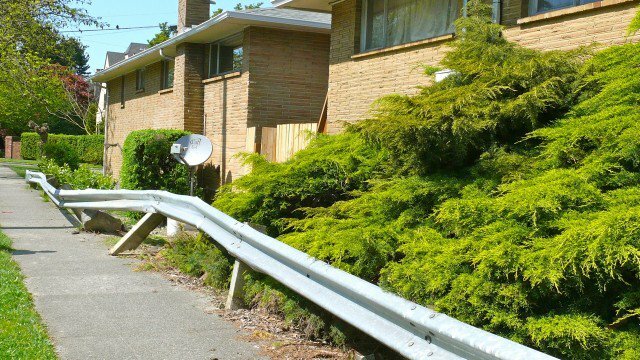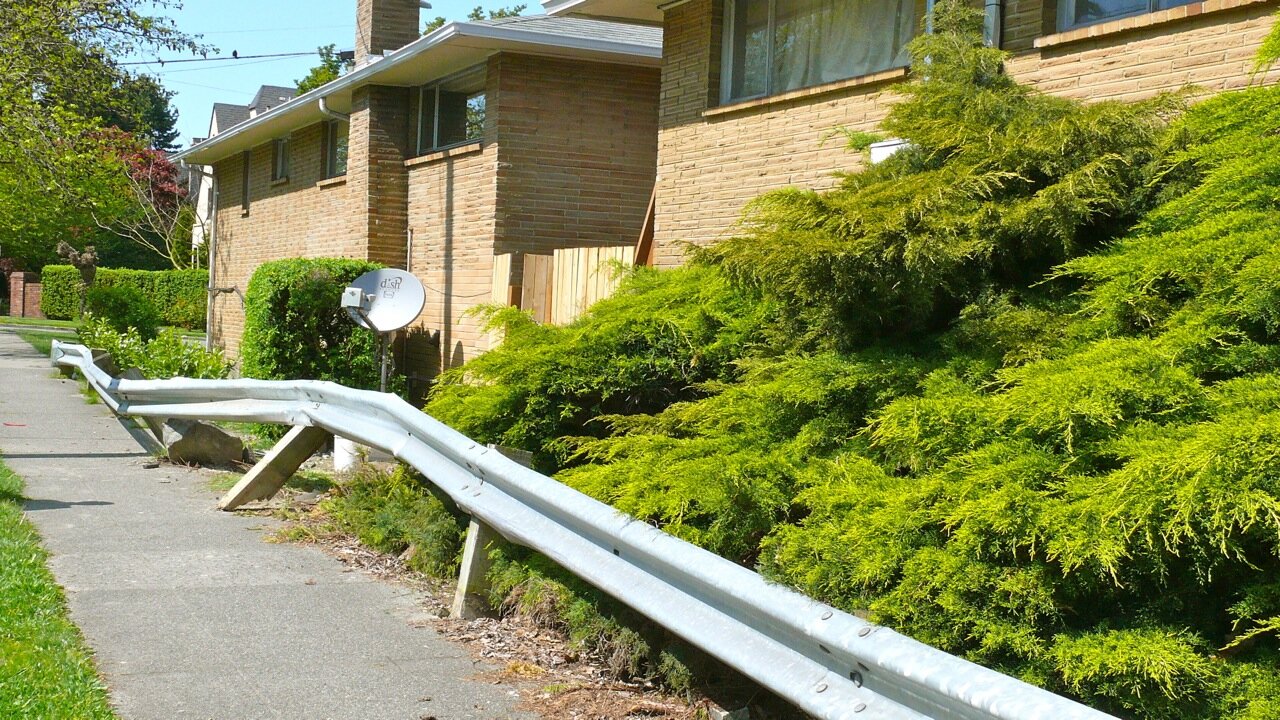
UPDATE: Thanks to Andrew Sullivan and Sightline for the links.
It’s a sad fact that you have to get out of your car, occasionally, and at those times you’re vulnerable if you’re anywhere near a street. Short of only patronizing drive-thrus, and making sure your home comes with a garage, there’s one sure way of bettering your odds of living peacefully with cars.
That’s slowing down the car before it hits you.
In “The War On Kids, the Elderly, and Other People Who Walk,” Sightline’s Eric de Place is writing about a bill before Washington legislature, which would allow cities to set 20-mph speed limits on their residential streets, without paying for an engineering and traffic study first. It seems picayune. What difference could five miles per hour make? It turns out to be life-and-death, because the relationship of fatalities to speed is not linear.
Someone hit by a car traveling at 40 miles per hour has an over-80-percent chance of being killed. At 30, it’s still 37 to 45 percent. But at 20, it’s just five percent. The key factors are stopping time and response time–at 20 miles per hour, the driver is in control of their car, and can stop before hitting someone. As you increase speed, you have less time to respond, while stopping distance increases.
There are apparently people for whom a five mile-per-hour difference is a bridge too far. Their time is far too valuable (despite their predilection for traveling long distances on residential streets) and in their cost-benefit ratio, the cost of a few lives is worth it. I don’t know how else to put it.
When you peruse the Seattle Department of Transportation’s 2010 Traffic Report, you learn that 529 pedestrians were hit by people in cars last year. Over 8,000 times, drivers hit other cars–but in fact, the citywide collision rate has been trending downward. It’s pedestrians who are getting hit more often than before.
The top three reasons for collisions seem indicative of a larger “my hurry is more important than your hurry” mindset: they were “not granting the right of way to a vehicle, inattention and following too closely.” Speeding, especially on arterials, can be a huge problem. SDOT found that a full 25 percent of SW Admiral Way traffic fell into the aggressive speeder category, exceeding the posted limit (30 mph) by ten miles per hour or more.
At Crosscut, senior citizen Doug McDonald notes that “Sixty percent of the dead pedestrians were senior citizens,” while in a majority of the pedestrian-hit-by-car incidents where responsibility could be assigned, the driver was at fault. (This is not to ignore the number of collisions caused by pedestrians strolling obliviously into the street, but the person they’re doing in is themselves.) In 2010, you were most likely to be killed by a car walking between 9 and 10 a.m., 1 and 3 p.m., and 6 to 7 p.m.
Interestingly, though you’d never know it from the complaints about from people driving cars about how terrible traffic is, Seattle’s average daily traffic the past two years is the lowest it’s been since 2000. And not by a negligible amount, either. 2003’s high of almost 980,000 daily vehicle trips fell to 900,000 in 2009, bouncing back slightly to 910,000 last year.
It’s not clear how much a 20-mph speed limit on certain residential streets would affect accident rates. There is always the question of whether people would obey the limit in the first place. But it doesn’t seem like a terrible thing, does it, if people want to request a lower speed limit where they live?

As someone who walks a lot but ALSO drives a lot (since I live in a city in the midwest and thing are spaced far apart) I can personally attest that driving somewhere at 20mph feels like you are a crawling snail. 20mph speed limits would be agony. So you’re going to get opposition if you do it where I live.
I think it would be a positive development to change the speed limits. Where I live the 25-30mph limit (depends on the street) just leads to some low level speeding. So reducing it to 20mph would hopefully lead to speeding in the 25mph range, reducing it from the 30-35mph range it usually takes now.
Yes, I think if we’re honest, 20mph seems like a great idea *if we’re not in a car at that very moment*. But I think it’s worth underscoring that this isn’t, as I understand it, a blanket attempt to make all roads 20mph, but a way to allow people on certain residential streets to emphasize that it’s not a secret, high-speed shortcut. As you say, it may not stop speeding, but it could at least, knock it down a little.
Having lived through the 55 mph years and now the speed/redlight camera moneymaker programs, it won’t make any difference whether it is 40, 30, 25 or 20 mph. Most of the people hit or run over, are killed due to distracted, impaired, or just plain bad drivers. A lot of people are hit downtown just trying to walk in a regulated/lighted crosswalk at less than 10 mph. Of course this would fit in with Mayor McSwhinn’s plan for us to all use bicycles and light rail.